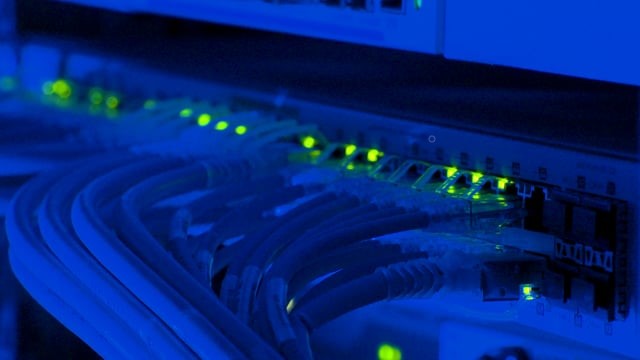Any reliable computer set-up these days requires high-speed Internet. The uptick in remote work and the world’s still pervasive social distancing requirements have increased this need tenfold.
When you want lightning fast Internet, as well as tools that don’t go obsolete too quickly, you need to invest in CAT 6 Ethernet cables. They’re widely considered the new standard among specialists and are used in a wide variety of settings and industries.
What are CAT 6 ethernet cables and how will they benefit your work station? Let’s take a look.
What Are Modern Internet Requirements?
If you work from home, fast Internet is a must. Slow Internet connections will chip away at your productivity and make even simple tasks a chore.
If you’ve ever had to step away from your computer while waiting for a lengthy download to finish, it’s time to consider replacing your Ethernet cables. Today’s ideal Internet requirement for people who use their PC semi-regularly (such as checking email or talking over instant messaging) is 100 Mbps. Between 300 to 500 Mbps, however, is better for those that regularly play MMORPGs and like to multitask.
If you want to use your Internet worry-free and not fuss over slow downloads, between 500 to 1,000 Mbps is ideal.
Related: Stranded vs Solid Wire: When & Why It Matters
What Are CAT 5 and CAT 5e Ethernet Cables?
Ethernet cables are complex, twisted cables designed to facilitate reliable Internet speed. CAT 5 and CAT 5e are the former technological standard and have slowly been phased out in favor of CAT 6.
CAT 5 and CAT 5e ethernet cables became a staple for a reason: they can transmit an impressive 1,000 Mbps on average. This is the standard for many remote workers today, as well as hobbyists and gamers. Due to the rise in CAT6 Ethernet cables, however, they have quickly become obsolete due to their more limited cross-compatibility features.
Testing your cables is a vital component of maintaining a productive system that works with you, rather than against you.
“Network cabling directly affects your business’s connectivity. When a network lags, corrupts, or fails, your enterprise loses money. When designing, installing, and maintaining your network, you should regularly test your network cable for vulnerabilities and potential threats.”

What Is the Difference Between Mbps and Mhz?
Put simply, Mbps is the unit with which data is measured. It displays how quickly and reliably you can download something, such as a new program or stream a video.
Mhz, on the other hand, isn’t related to the Internet. Short for ‘megahertz’, it gauges the power of your PC and how efficiently it’s running. For those who want a fast computer to handle several complex tasks at once, between 3,000 to 5,000 Mhz is ideal.
What Are Cat 6 Ethernet Cables?
The world runs on powerful Internet. CAT 6 Ethernet cables emerged as the new standard several years ago and have outright replaced CAT 5 and CAT 5e for most people.
Contrary to popular belief, CAT 5e and CAT6 Ethernet cables offer roughly the same Internet speeds. They differ in bandwidth: CAT6 boasts double the bandwidth size and can transfer files much more quickly. Due to their shielded design, they also reduce frustrating interference.
Also referred to as ‘crosstalk’, interference is a phenomenon in which signals blur together while traveling to your computer. This disruption can interfere with memory-hungry tasks like MMO raids, livestreams, and video calls.
Related: Cat 5 vs. Cat 6: What You Need to Know
Are CAT 6a Ethernet Cables Better?
It’s understandable to be staggered by all the models on the market. While CAT 6 Ethernet cables are the new standard, CAT 6a might be a better option depending on your set-up.
CAT 6 and CAT 6a offer the same bandwidth capabilities, but with one key difference: the latter has the ability to reach 500 Mhz and 10,000 Mbps. Their powerful shielding design drastically reduces interference and, best of all, doesn’t need to be replaced anytime soon.
While they’re a touch more expensive than CAT6 (running at $15-20 per standard 12-foot cable), they are well worth the investment for those with complex home computer set-ups. Fiber optic cables are another option to consider for those that want to stay on the cutting edge of fast Internet.
“Current fiber optic networks can handle speeds up to one-hundred times faster than existing internet speeds, so there is plenty of room for improvement before we will be looking for the next new technology.”

Which Cable Is Best for My Set-Up?
Even if you don’t use your computer for more than just email and video calls, it’s highly recommended by today’s professionals you invest in CAT 6 Ethernet cables. Their reliable bandwidth size and protective design make them a sound investment.
Nearly 60% of people worldwide use the Internet regularly. Even casual use is seeing more demand for fast downloads and uninterrupted calls. CAT 6 Ethernet cables are cross-compatible with CAT 5 and CAT 5e, making their replacement a breeze for those that don’t consider themselves computer savvy.
CAT6 cables run between $10 to $15 for a standard 12-foot cable, while CAT6e is a valid option for those that want a significant boost in Mhz and Mbps. Both provide a shielded design to reduce interference and are held up as the shining standard in modern Internet capabilities. The length of the cable is vital, as you want to have flexibility to set up your home office and reduce the risk of propagation delay.
“Propagation delay is the length of time it takes for a signal to propagate from one end of a circuit to another. The primary factor influencing it is the length of the cable, although other variables can affect it. Limiting delay to within a reasonable threshold keeps large networks functioning at as close to an optimal level as possible.”
Related: Cat8 Cable: Everything You Need To Know
Last Updated on August 2, 2022 by Josh Mahan




